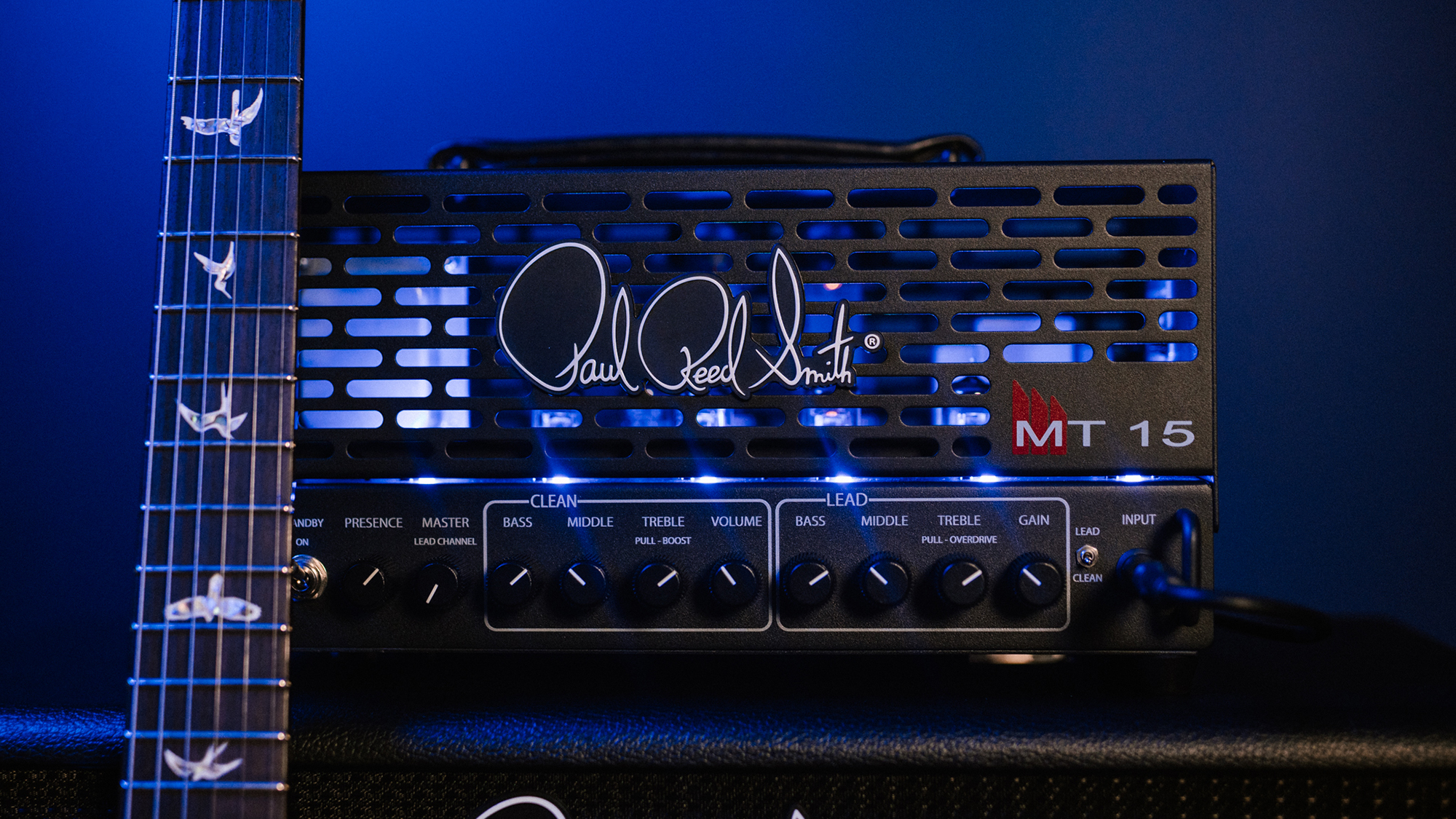Porridge Radio's Dana Margolin on how a budget offset and lashings of feedback built their mesmerizing new album
The Mercury-nominated songwriter discusses her "dad rock" teenage guitar heroes, assembling ramshackle Tom Waits-inspired drum sets and finding the overdrive pedal that was "the one"
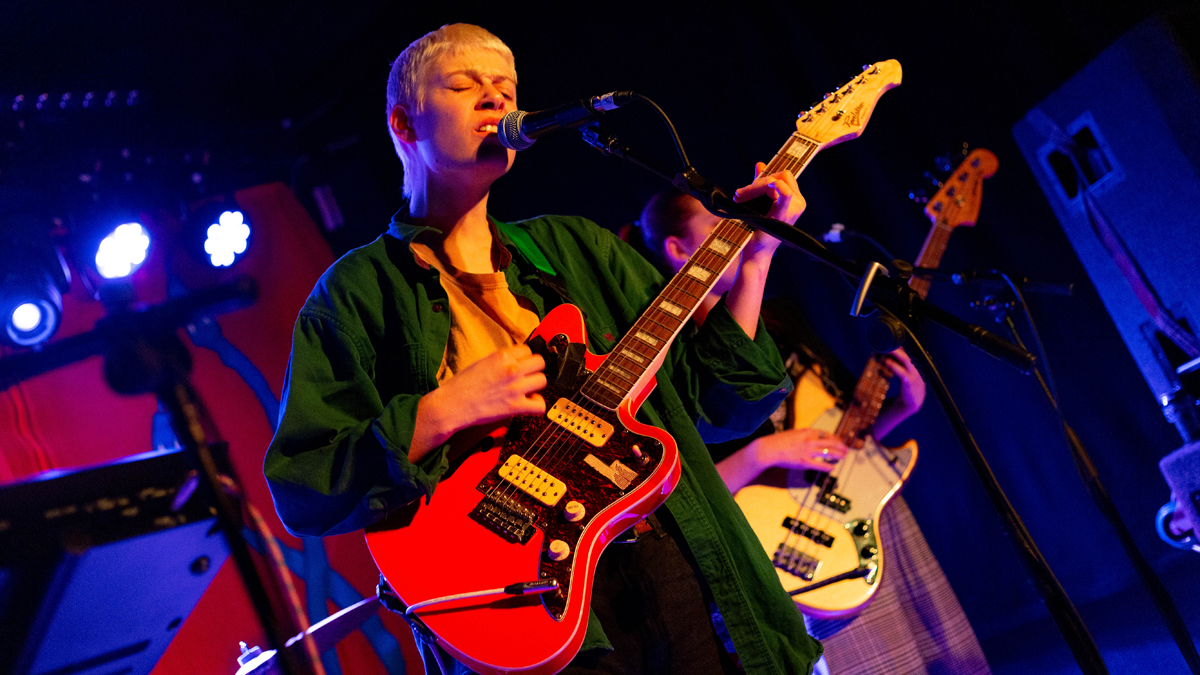
When Virginia Woolf lectured about the importance of a room of one’s own, she could have easily been envisaging the art studio Dana Margolin is speaking from today. On joining our call, the guitarist and songwriter of UK indie-rockers Porridge Radio starts twisting the camera, showcasing her latest artistic feats.
“These are some recent ones,” she begins, offering up some bright Hockney-style acrylics by a pool. “And I made that for the last album,” she says, gesturing at a pastel mood board behind her. There’s also a print of Every Bad – the band’s Mercury-Prize nominated record of 2020 – on the wall; piles of paintings are propped up against a chest of drawers with a vivid orange Octopus sitting on top.
While the sea creature might feel out of sorts, the ocean has been a consistent backdrop to the band ever since its inception in 2015. Initially a solo endeavor for Margolin, who was living in Brighton, England, at the time, Porridge Radio has since blossomed into a four-piece band. The tight-knit lineup is completed by keyboardist Georgie Stott, bassist Maddie Ryall and drummer Sam Yardley.
Staying loyal to those southern coastlines, Porridge Radio’s latest offering, Waterslide, Diving Board, Ladder to the Sky was recorded in the seaside resort town of Eastbourne, and mixed and arranged in Margate. Even their latest press shots, Margolin confesses, are tinged with the spirit of the sea. “We were like, ‘Where's a good spot for photos?’ Well, we drove past this beautiful part of the south coast!”
Keeping it seaside, the band is fresh from performing a BBC 6Music session at this year’s Great Escape Festival. Margolin, despite being a former Brightonite, isn’t overly effusive about the experience (“You can't move for bumping into someone!”). Surrounded by her art-making materials and the early summer sun on her face this morning, though, the musician is back in her happy place.
With a string of live shows on the horizon, we caught up with the Porridge Radio powerhouse to discuss bro culture, junk shop drum kits and the revelation of a Revelation RJT-60.
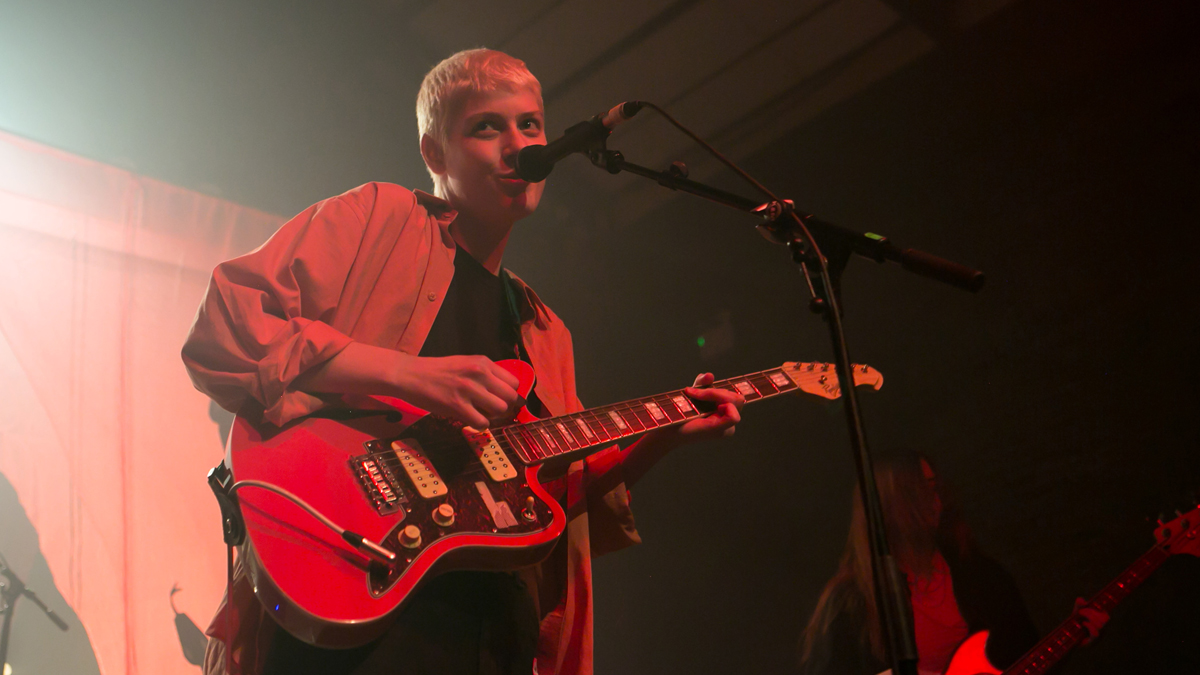
You grew up on what you described as “dad rock shit”, with a possible shock guitar hero in Slash. What was it about Guns N' Roses that captivated you early on?
Get The Pick Newsletter
All the latest guitar news, interviews, lessons, reviews, deals and more, direct to your inbox!
“I get asked so many questions where I have to choose a person that sometimes I choose people arbitrarily! [laughs] But when I was about 12, I had a huge Appetite for Destruction poster on my wall. My dad especially was into Led Zeppelin, Deep Purple and The Scorpions. When you have somebody, like a parent or sibling, who's really into something, it's contagious.
“My dad took me to all my first gigs. [I remember] seeing Roger Hudson from Supertramp at Shepherds Bush Empire [London] when I was about 11 or 12. Playing there this year was a conscious choice because that's where I went to see my first gig. And we're probably not going to get the chance to do this kind of show again.”
A few years after that, you picked up the guitar. You’ve spoken before about how you started playing shows and writing songs long before you felt comfortable on the instrument.
“I started learning how to play guitar when I was about 18. As a teenager I'd played bass, so I had a rough understanding of what that instrument was but I was never that good at it. I got my brother, who also played guitar, to write out a load of chord shapes on a bit of paper for me.
“I would learn how to play Cat Power and Neil Young songs. I was already writing songs, because I was writing poems and then being like, 'I need to accompany these on an instrument,' so I picked up a guitar. Over the years, I've figured out how to play guitar, but it took me a while.”
In 2018, Fender released a study that showed women accounted for half of all new guitarists, despite the fact that there can still be quite a heavy 'bro culture'. What would you say to someone who's considering exploring the guitar but is a bit apprehensive at the thought of doing so?
“You don't need to know what you're doing to do it. Do it badly and do it in a way that lets you express what you need to express, and don't expect anything from it. Don't overthink it. Ask questions. It's fine, and people who undermine you are generally undermining you because they're insecure. Let go of that need to be the best. If you wait to be perfect to start anything then you'll never start it.
There are always going to be men in guitar shops who think they know better than you, so maybe it's fine to ignore them
“There are always going to be men in guitar shops who think they know better than you. There are always going to be men everywhere who think they know better than you so maybe it's fine to ignore them.”
In Sweet’s video, you’re grasping a red Revelation RJT-60 Thinline. How did you find the brand and what other guitars were in the mix for your main instrument?
“I played an Epiphone SG. I never knew what [guitar] I wanted to play, so I was playing that for ages, but I knew that it wasn't quite right. We were in Manchester one year and we went to a massive guitar shop, and I saw they had a few Revelations in there. I picked one up and had a play around with it and was like, 'This feels really good.'
“I've loved it ever since. What's amazing about it is that it's affordable compared to a lot of other guitars, but it sounds great. I've also recently been playing a Fender Telecaster [with] some humbuckers on it as well.”
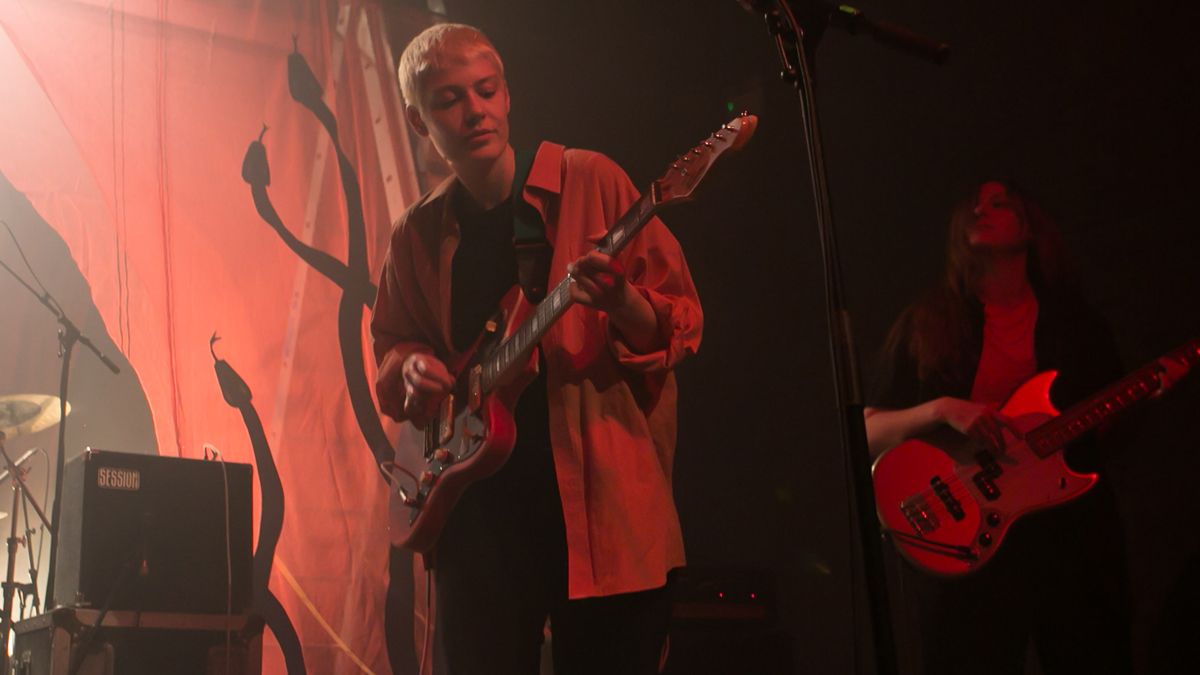
New tracks Rotten and The Rip have some huge distortion and feedback layers. What was your rig for this record in the studio, and does it differ from a live setting?
“For the live show, I've got a Sessionette 75, but I love amps that are really gain-y and that have loads of fuzz. I love an HH amp, as well. I love anything that's got a big gain knob on it.
“When we were recording, we did a lot of feedback layers afterward. I got Sam [Yardley, drums] to do feedback. On Rotten, I was doing the feedback with both of us on the floor, and they were just hitting all these different pedals and twiddling all the knobs.
“I recently got a Wampler Plexi-Drive, which is like a Klon distortion. I’ve got a Boss Overdrive [SD-1] as well and it does the job. But when I got this Wampler Plexi-Drive, I was like, 'This is the one!' It’s fuzzy but hard. I also have an MXR Dyna Comp compressor pedal because I play very quietly and then very loudly, and I realized I needed something to help me make it more level.
“There's also a Mooer Reecho delay and a Danelectro FAB Chorus as well that I use. I try to keep pedals to a minimum if I can and only use them when I need them, like in The Rip where you need that shred.”
There are also some playful elements working with a junk-shop drum set in I Hope She’s Okay 2 and Trying. When did that brainwave strike, and what does the guerrilla percussion add to those tracks?
“We were in the car driving from Brighton to Eastbourne to record, and we were listening to Tom Waits' Rain Dogs. I was like, ‘Sam, what's that noise? How did they make that?' They were trying to figure it out and got onto some weird website – tomwaitspercussion.com or whatever – and it was talking about how he used to whack metal on the concrete outside, or get loads of different weird things and hit them. We were like, ‘Oh yeah, you can do anything you want.’
That's been our motto for the last however long: you can make any noise you want
“That was one of our last sessions at the recording studio in Eastbourne. Sam, Tom and I all ran around the yard at the studio. We found metal ashtray buckets. We found a bit of a car that was being worked on in the yard. Pots and pans and tins; we took whatever we could find and arranged them to make a drum kit. That's been our motto for the last however long: you can make any noise you want.”
- Waterslide, Diving Board, Ladder to the Sky is out now via Secretly Canadian.
Cheri Amour is a writer, editor and broadcaster intent on amplifying the voices of women and non-binary artists in print, online and on air. During her twenties, she played lead guitar in a touring two-piece, sharing the stage with The Slits and John Peel-approved punks The Nightingales. Formerly Deputy Editor at TGA Magazine, Cheri headed up its Tech section pouring over pedals with everyone to indie icon Debbie Smith (Echobelly/Curve) to multi-instrumentalist Katie Harkin (Sleater Kinney/Waxahatchee/Wye Oak). She's currently working on an upcoming 33 1/3 book on the unassuming influence of South Bronx sister troupe ESG, out in Spring 2023.



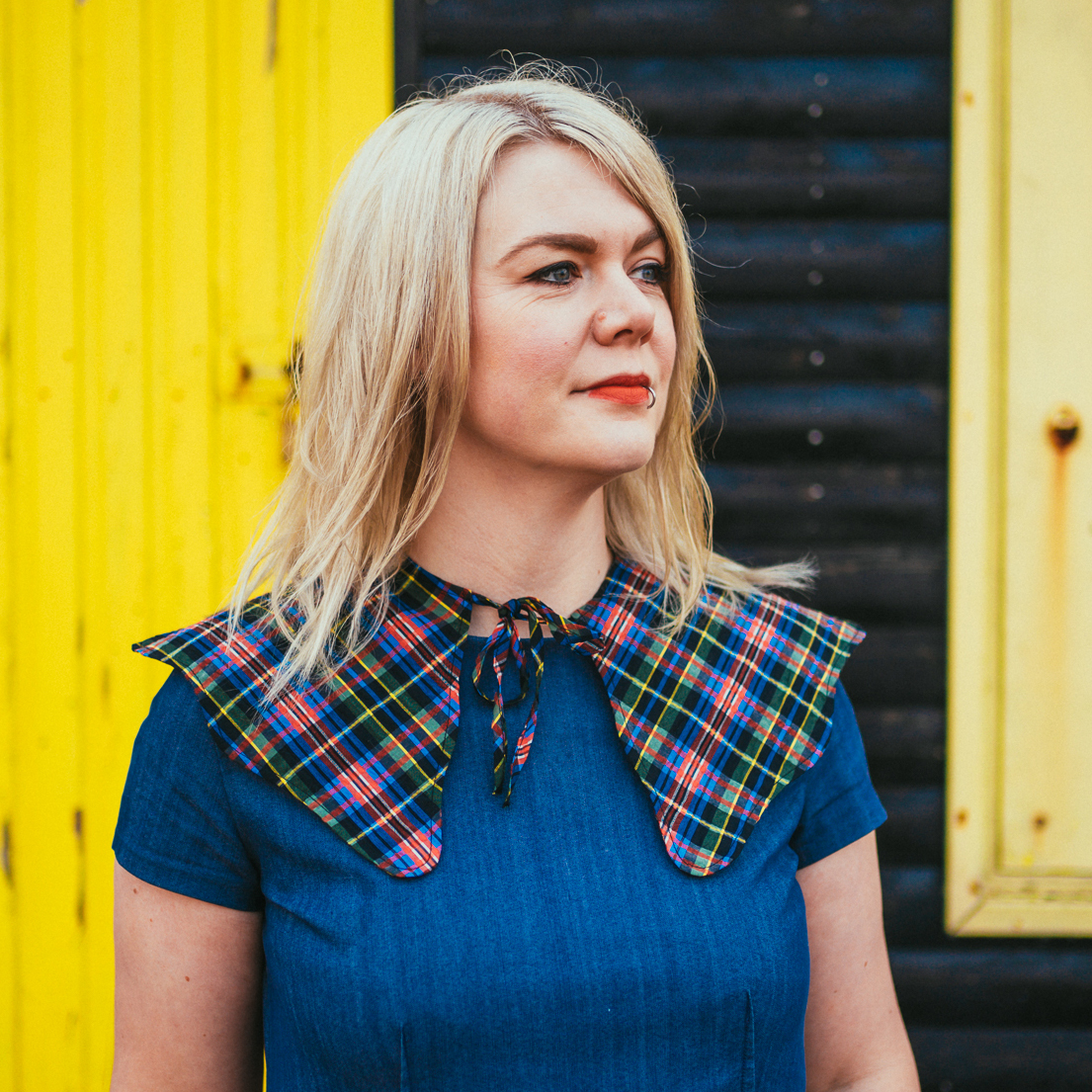



![John Mayer and Bob Weir [left] of Dead & Company photographed against a grey background. Mayer wears a blue overshirt and has his signature Silver Sky on his shoulder. Weir wears grey and a bolo tie.](https://cdn.mos.cms.futurecdn.net/C6niSAybzVCHoYcpJ8ZZgE.jpg)

![A black-and-white action shot of Sergeant Thunderhoof perform live: [from left] Mark Sayer, Dan Flitcroft, Jim Camp and Josh Gallop](https://cdn.mos.cms.futurecdn.net/am3UhJbsxAE239XRRZ8zC8.jpg)




